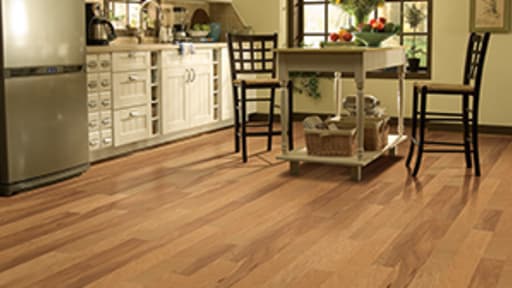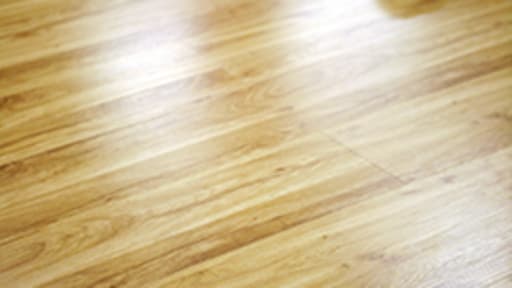Fix Laminate Bubble & Air Pockets
Posted by Iris M. on 7th Jun 2023
Laminate flooring is a popular choice today due to its durability and range of pattern designs compared to other types of flooring. From time to time laminate flooring problems do pop up. Air pockets are common laminate flooring problems. Generally, these problems are associated with the floor’s installation or adverse conditions. Removing the air pockets is easy to fix without affecting the floor’s appearance.
What Causes Air Pockets Under Laminate Flooring?

DIY home repairs can fix and prevent future problems using the proper methods of installation. The air pockets develop underneath laminate flooring. One cause is uneven sub-flooring. When high or hollow spots exist, it traps air and the floor pieces move and rub against each other. The results are creaking noises. Insufficient underlayment is another problem source. The underlayment is a thin sheet of foam that absorbs sound and provides the cushion you feel as you walk on top of the floor. Overtime cracked or broken tongues trigger the pieces to move, creating gaps followed by squeaking sounds. The gaps generally develop at the seams. The good news - it is possible to fix a creaking floor.
Fixing the Air Pockets in Laminated Floor

Before attempting to fix a creaking floor, you need to know what caused the air pocket. It could be a buildup of moisture due to humidity in the room. DIY home repairs can use dehumidifiers to remove the excess moisture. Allow some time for the floor pieces to return to normal form. If the flooring is new, be sure to check your warranty.
- Temperature changes instigate laminate flooring problems. The floating feature lets the flooring expand and contract. Insufficient space between the walls and the floor prevents the expansion and contraction. The result is what the industry calls buckling.
- Spacers are wedges placed between the laminate floor and the wall during installation.
- DIY home repairs can place spacers between the floor and the wall.
- Floor baseboards or moldings are final additions in all home improvement projects. Installing the baseboards directly on top of the laminate floor edges prevents the floor from expanding. To repair the laminate flooring problems, you need to remove the molding.
- Reinstall the baseboard or molding so that it sits above the floor. The gap allows the expansion.
- Replace any damaged floor pieces before reinstalling the baseboard.
- Today’s open concept designs are perfect layouts for large laminate flooring projects. Typically, large areas have door openings leading to other areas of the home. Proper spacing between the floor and door jams, glass slider frames or closet doors prevent air pockets.
- Keep in mind air pockets cause the floor to lift.
- Severe damage will require a full replacement of the floor.
When there are large laminate flooring sections in the room, expansion joints help to prevent air pockets. T-joints create small gap spaces between two areas of the floor, allowing the floor to expand and contract.
Conclusion
Expansion space between the floor, walls, cabinets, outlets and vents are necessary to reduce laminate floor problems. For DIY home repairs, the laminate floor product usually recommends the size of spacing. The industry standard suggests at least one quarter of an inch between the floor and wall.
About The Author
Iris M. writes blog content for real estate; research, region and community information for the purpose of providing information to the reader, helping them with decisions when selecting a home. She writes content on a variety of subjects, pertaining to client specifics, industry related, research and informative studies, including "how to" for mass market and social media.
The articles and other content contained on this website/blog are provided for informational purposes only and should not be relied upon for any purposes. While it is our goal to provide you with up-to-date, relevant and useful information on a wide range of topics, we make no representations or warranties of any kind, whether express or implied, concerning the reliability, suitability, completeness or accuracy of any of the information made available on this site. The articles and information contained on this site are not intended to provide legal, accounting or other professional or business advice and should not be treated as a substitute for the advice of a professional with knowledge of the facts and circumstances of your specific situation. By accessing this site, you agree that you will not seek to hold E.C. Barton & Company or any of its affiliates liable for any losses or unanticipated costs or assert any other claim based on your use of this site or on the reliance on the content contained herein.



